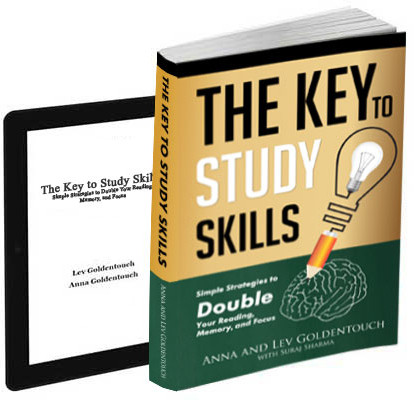One of the most important skills for any software developer or engineer is mastering software architecture. Whether you’re working on a simple application or a complex system, understanding how to structure and design your software properly is crucial. Software architecture provides the framework upon which all other aspects of the system are built, making it essential to have a solid grasp of architectural principles and design patterns.
When learning software architecture, visualization techniques such as mind mapping, visual memory systems, and mnemonics can greatly enhance the way you process, understand, and retain architectural concepts. These techniques can also help you make more efficient use of your brain’s cognitive resources, allowing you to design and implement systems with greater clarity and precision.
The Significance of Software Architecture
Software architecture is the backbone of any successful software project. It dictates how different components of a system will interact with one another, how data will flow, and how the system will scale over time. One of the most common and widely used architectural patterns is the Model-View-Controller (MVC) architecture, which separates the system into three key components:
- Model: Manages data and business logic.
- View: Handles the presentation layer (what the user sees).
- Controller: Acts as an intermediary between the model and the view.
Understanding how these components communicate and work together is crucial to building a successful and maintainable system. Software architects often face the challenge of designing these interactions in a way that balances performance, scalability, and maintainability.
How Accelerated Learning Enhances Software Architecture
Accelerated learning is a powerful approach that can help you improve your ability to understand and retain complex software architectures. Through techniques like speed reading, visualization, and mnemonics, you can accelerate your learning and deepen your understanding of architectural principles. Here’s how Accelerated learning can enhance your software architecture skills:
1. Mindmapping for Hierarchies and Communication Buses
Mind mapping is a great tool for visualizing software systems, particularly for understanding databases, UML hierarchies, and communication buses. These concepts are often complex and involve understanding relationships between multiple components. Mind maps allow you to break down these components into smaller, more manageable pieces, making it easier to visualize how they interact with each other. Each node in the mind map can represent a class or component, and the links between them represent relationships or data flows.
Using visual memory techniques in combination with mind maps can further enhance your ability to understand and recall these relationships. For example, by incorporating PAO (Person-Action-Object) encoding into your mind maps, you can make the components and their interactions more memorable and easier to recall.
2. Use Cases: High-Level Visualizations
Use cases describe the specific ways users will interact with the system. They can be challenging to visualize because they often involve multiple components and interactions. One way to tackle this challenge is to use high-level visualizations, such as combining the loci method and PAO system to turn use cases into memorable stories. This approach helps you break down complex use cases into visual sequences, making it easier to understand the flow of data and interactions within the system.
By transforming use cases into stories, you not only improve your understanding of how the system works but also create a mental narrative that makes it easier to recall key information when you’re working on the implementation.
3. Interfaces and Pins: Pegs and Major Systems
In systems design, interfaces and pins are key touchpoints where components interact with each other. Memorizing the names and properties of these interfaces can be challenging, but using techniques like the Major System or Dominic System can help you encode these names into more memorable visual representations. By associating each interface or pin with a person, place, or object, you can create mental anchors that make it easier to recall these components when needed.
This technique works well for large, complex systems where the number of interfaces and pins is extensive. By turning abstract concepts into something more tangible, you can improve your ability to recall and work with these elements.
4. Floor Plans and Board Designs: Spatial Visualization
For software architects and engineers working with hardware or complex system designs, floor plans or board designs are often used to visualize how different components fit together. These designs can be difficult to comprehend without the right visualization techniques. One way to approach this challenge is to turn the designs into familiar shapes or objects. For example, you might imagine a floor plan as a game level, a spaceship layout, or even a map of a city. Associating the design with something you can easily visualize will make it easier to understand and remember.
Spatial visualization techniques like this can help you not only understand the design but also optimize the layout for better performance and scalability.
5. Design Paradigms: Creativity Meets Structure
Design paradigms are frameworks that help guide how software systems are structured and built. These paradigms often require a combination of creativity and technical expertise. Instead of relying solely on mnemonics to memorize design paradigms, it’s more effective to tap into the original associations that guided the design. For example, when exploring a design paradigm, try to connect it with your own experiences or projects, or visualize how the paradigm would apply to real-world scenarios.
By leveraging your own creativity and understanding, you can enhance your ability to work with design paradigms and apply them in innovative ways.
The Role of Accelerated Learning in Programming
Accelerated learning techniques aren’t just beneficial for software architecture; they also help programmers and engineers learn new programming languages, libraries, and algorithms faster. By using speedreading, visualization, and active recall, you can process large amounts of technical information more efficiently, allowing you to stay ahead in a rapidly evolving field.
For instance, speedreading can be invaluable when you need to read technical documentation, research papers, or tutorials quickly. By applying techniques like sub-visualization and focusing on key concepts, you can increase your reading speed while maintaining high retention. Explore more about the connection between speedreading and programming.
Moreover, Accelerated learning techniques can help you process large datasets and complex algorithms more efficiently, enabling you to apply the knowledge you’ve gained in real-world scenarios. As a data scientist or AI programmer, mastering Accelerated learning can drastically improve your ability to handle large-scale machine learning models or neural network development projects.
Conclusion
Mastering software architecture and programming requires more than just technical expertise. By incorporating Accelerated learning techniques such as visualization, speedreading, and mnemonics, you can accelerate your learning process and become a more efficient and creative programmer. These techniques not only enhance your understanding of complex systems but also improve your ability to retain and apply this knowledge.
If you’re ready to level up your programming and architectural design skills, consider exploring the Speedreading Premium Bundle and the Programming and Projects Subscription. These courses are designed to help you unlock the full potential of your Accelerated learning skills.
For more insights and updates, join our Facebook community and connect with like-minded learners and professionals.
And don’t forget, for in-depth guides and tools to improve your learning and productivity, check out my books on Amazon.

Get 4 Free Sample Chapters of the Key To Study Book
Get access to advanced training, and a selection of free apps to train your reading speed and visual memory

